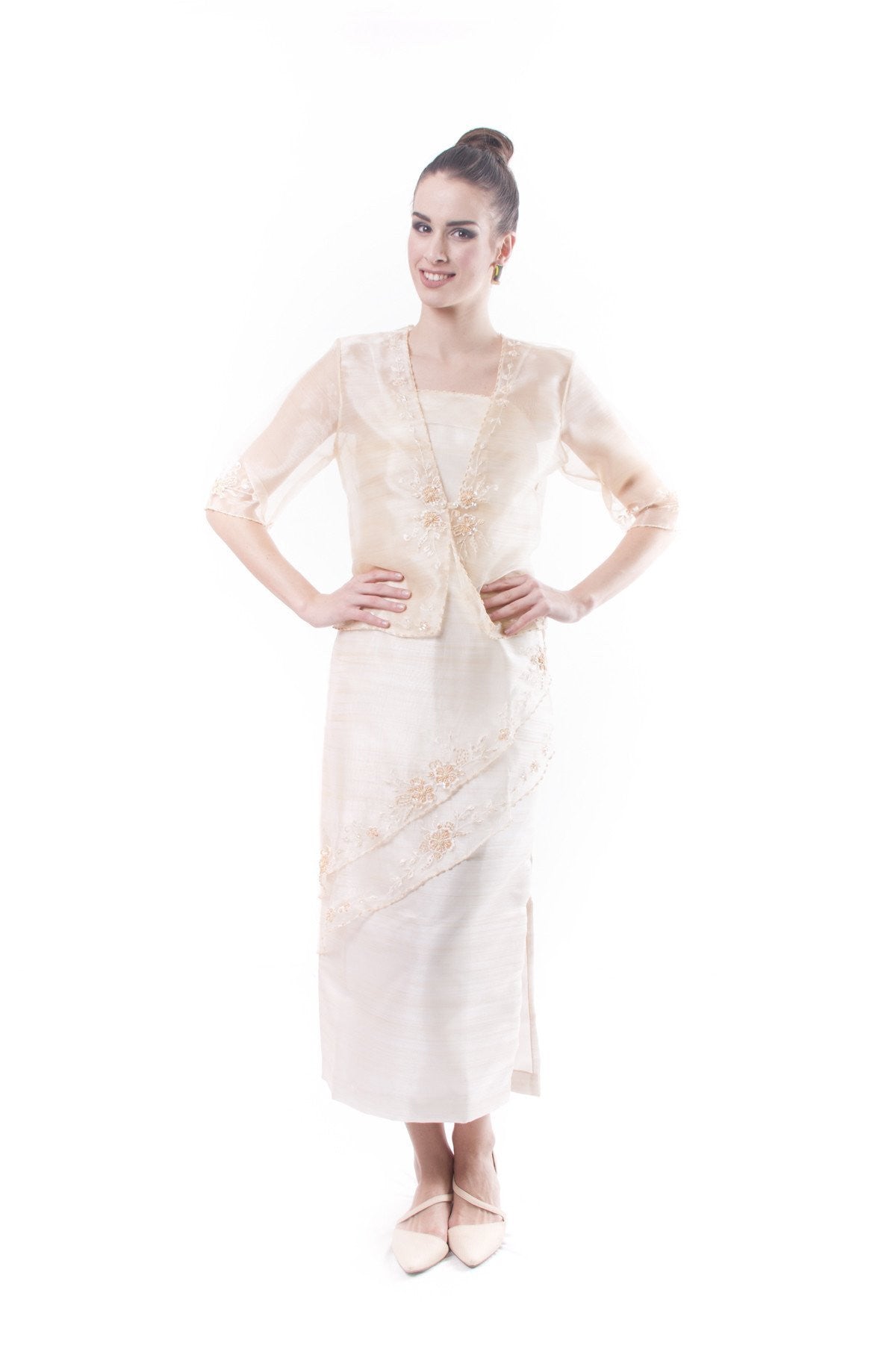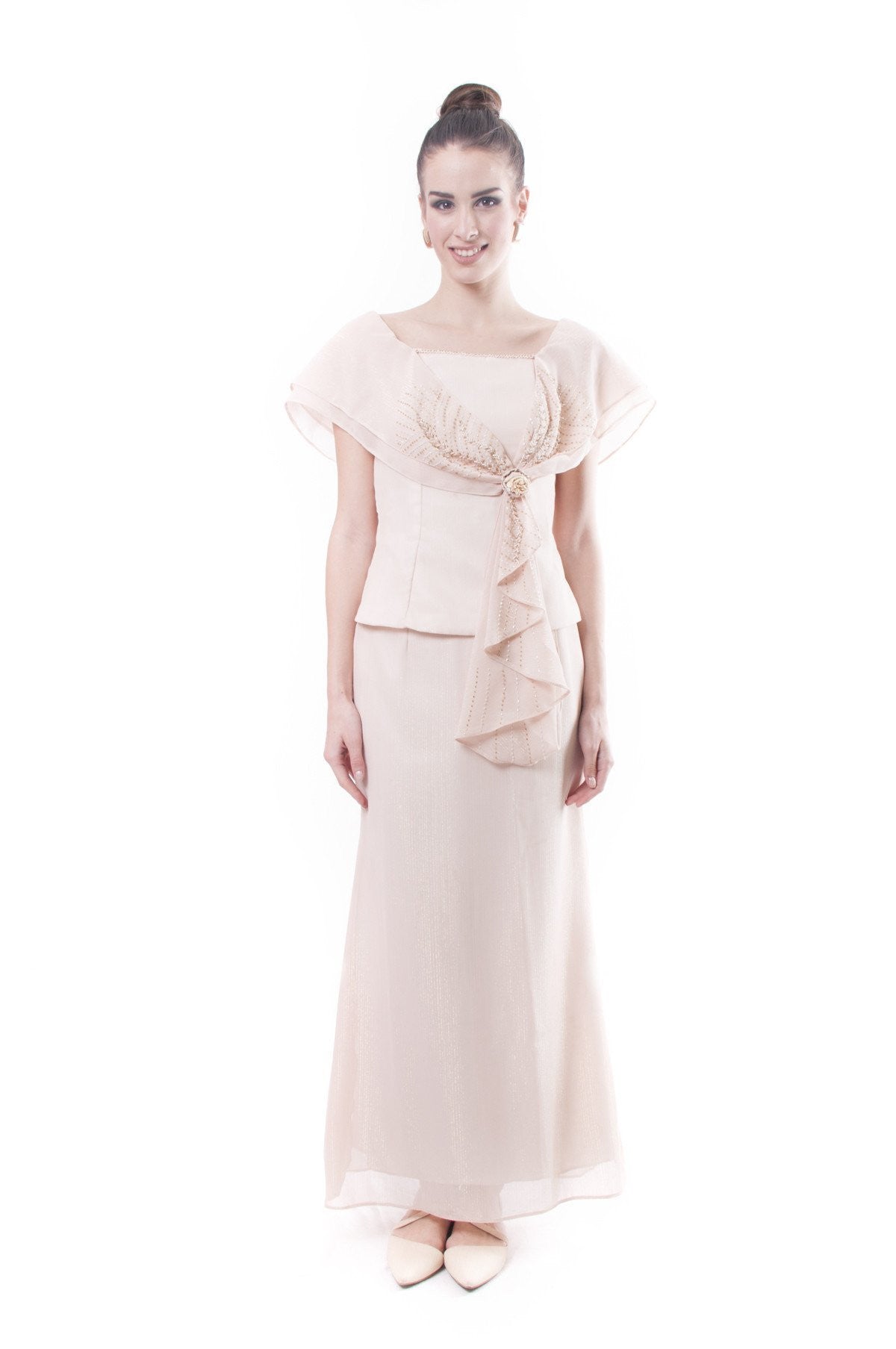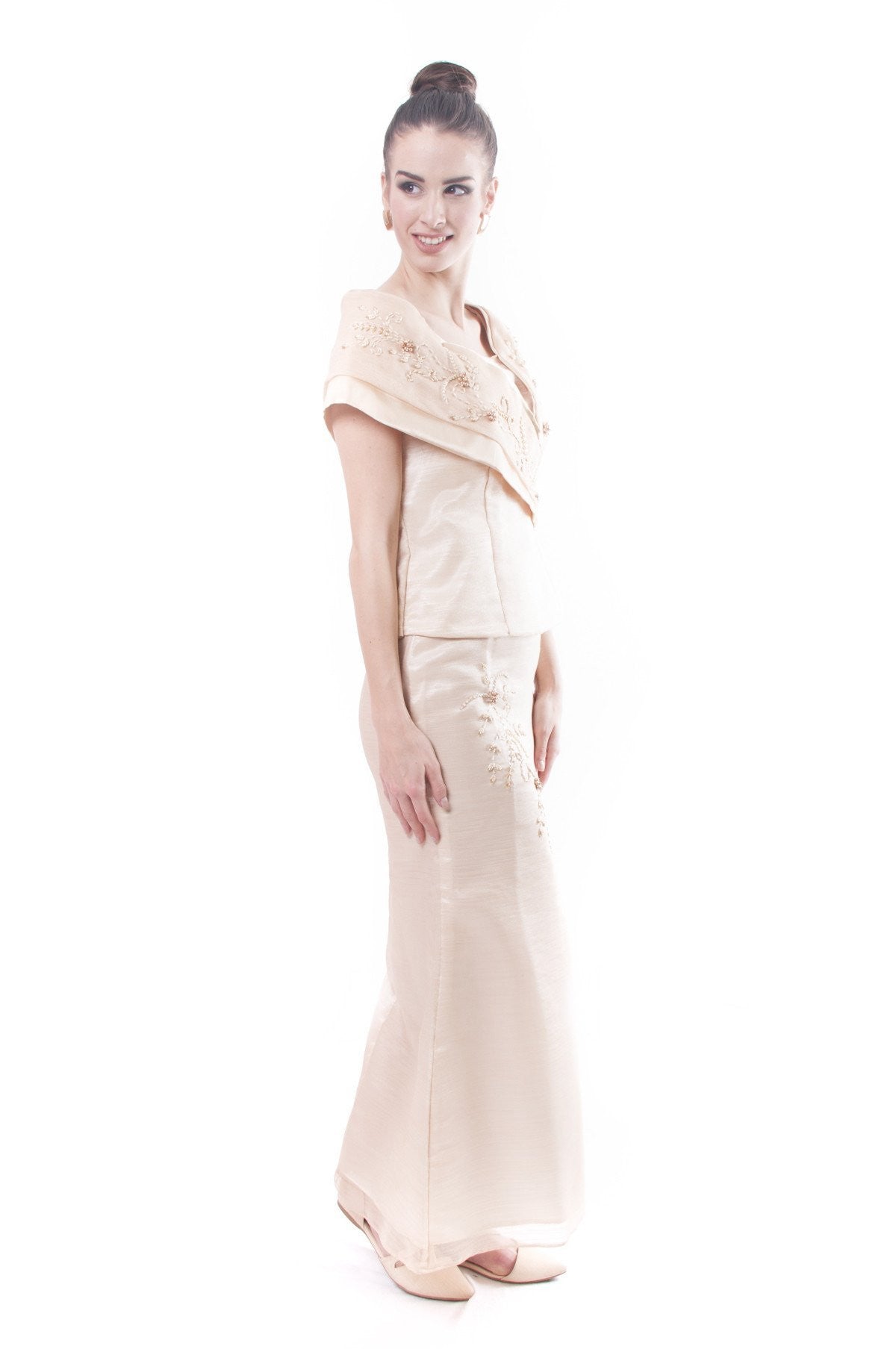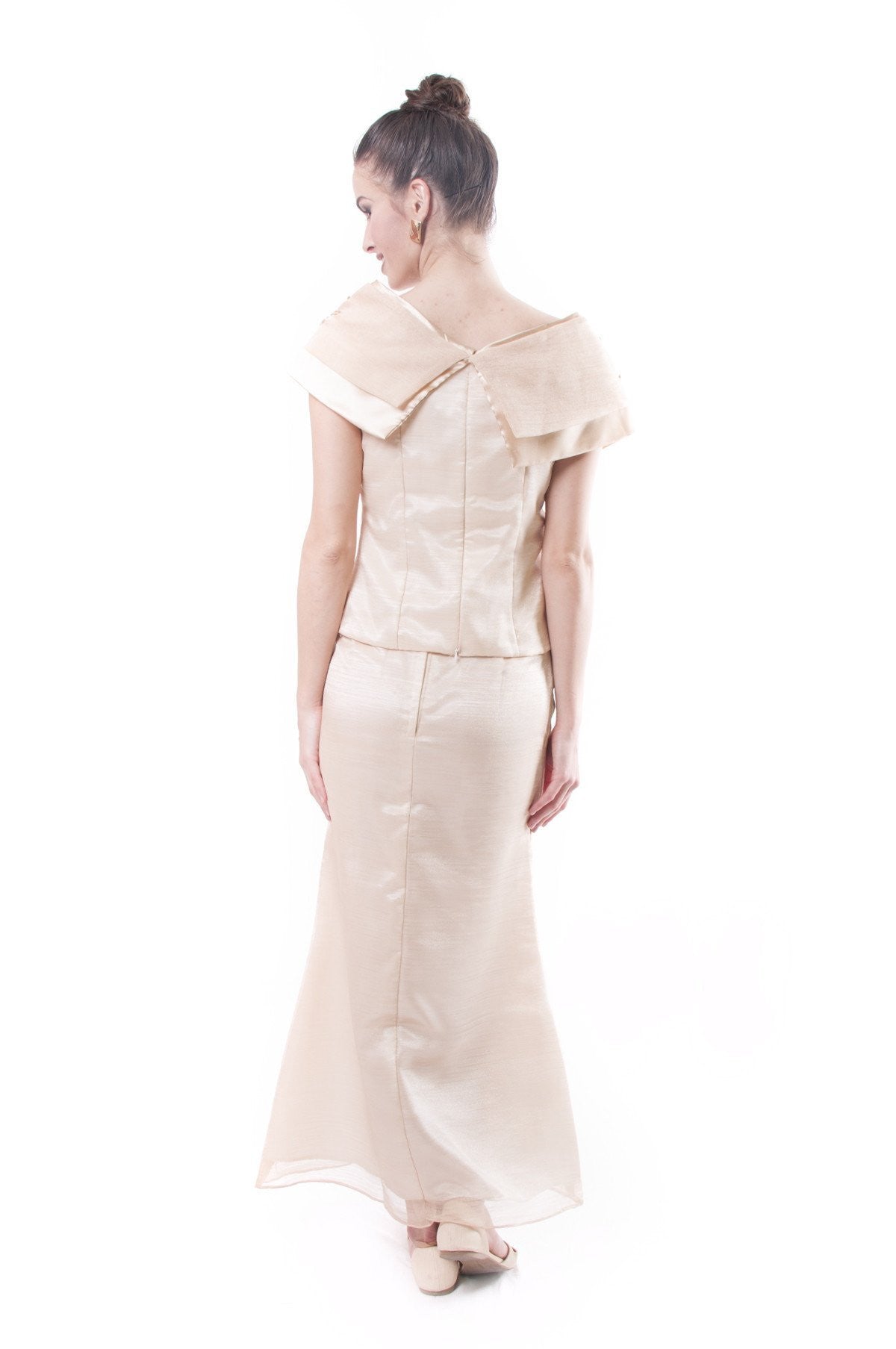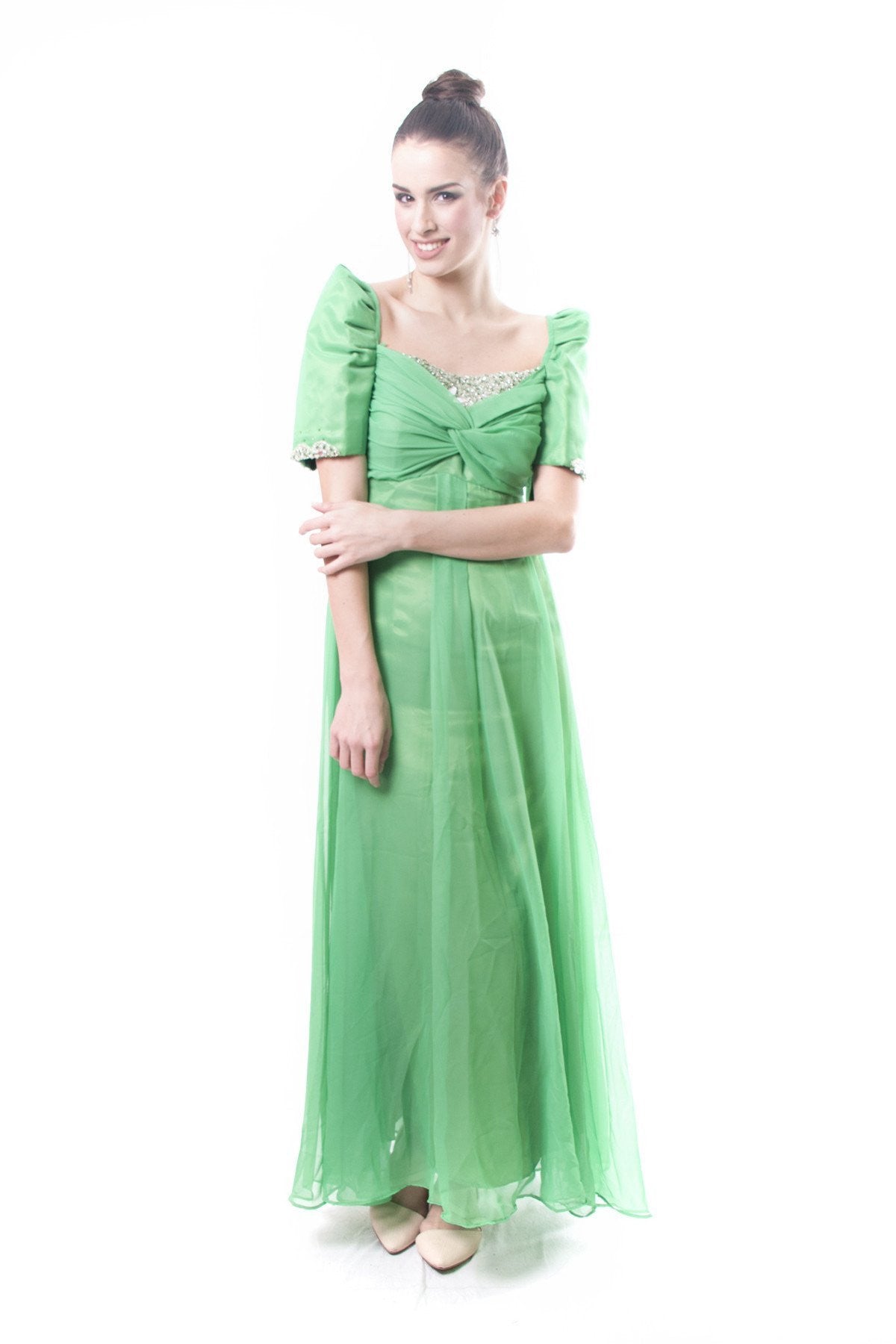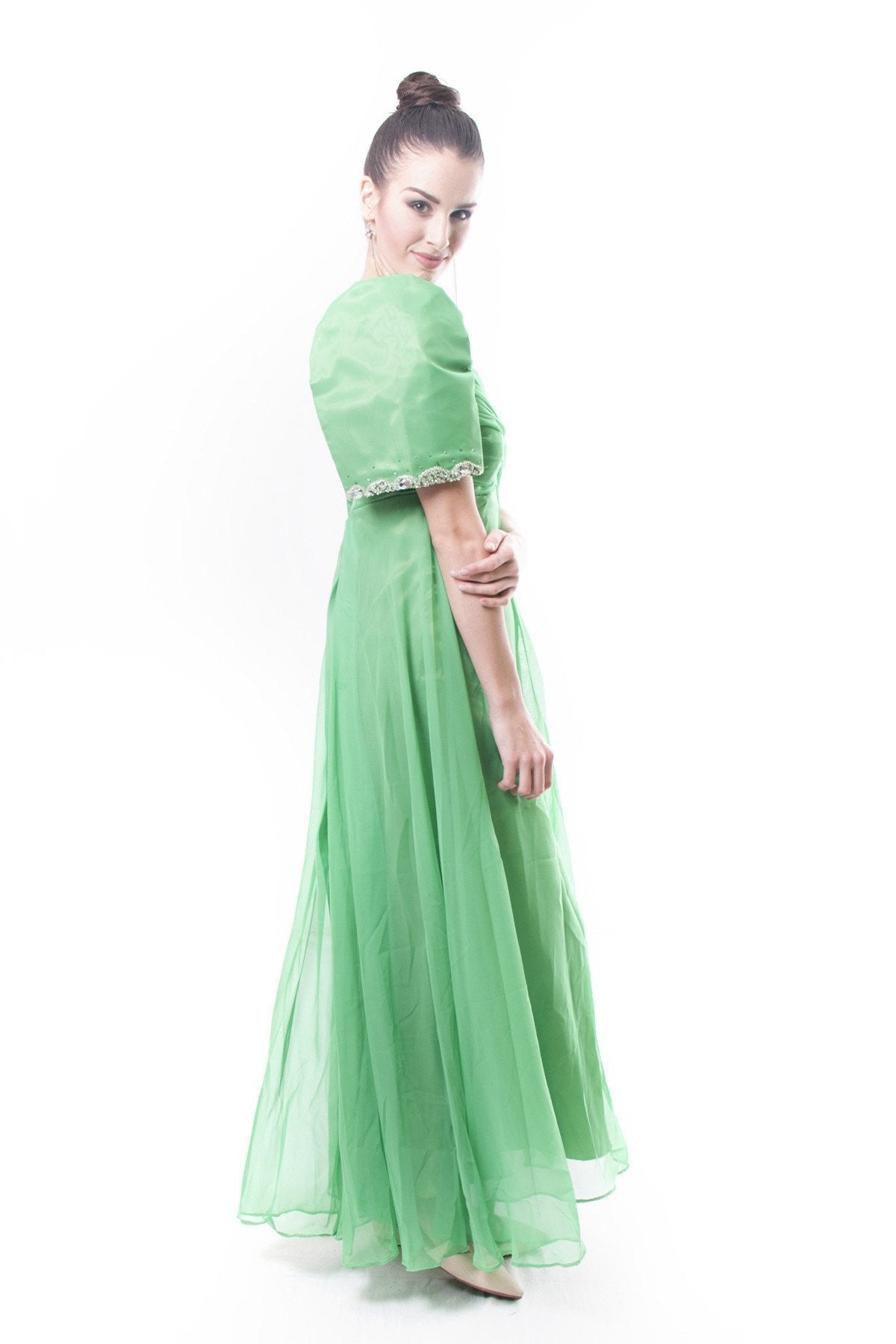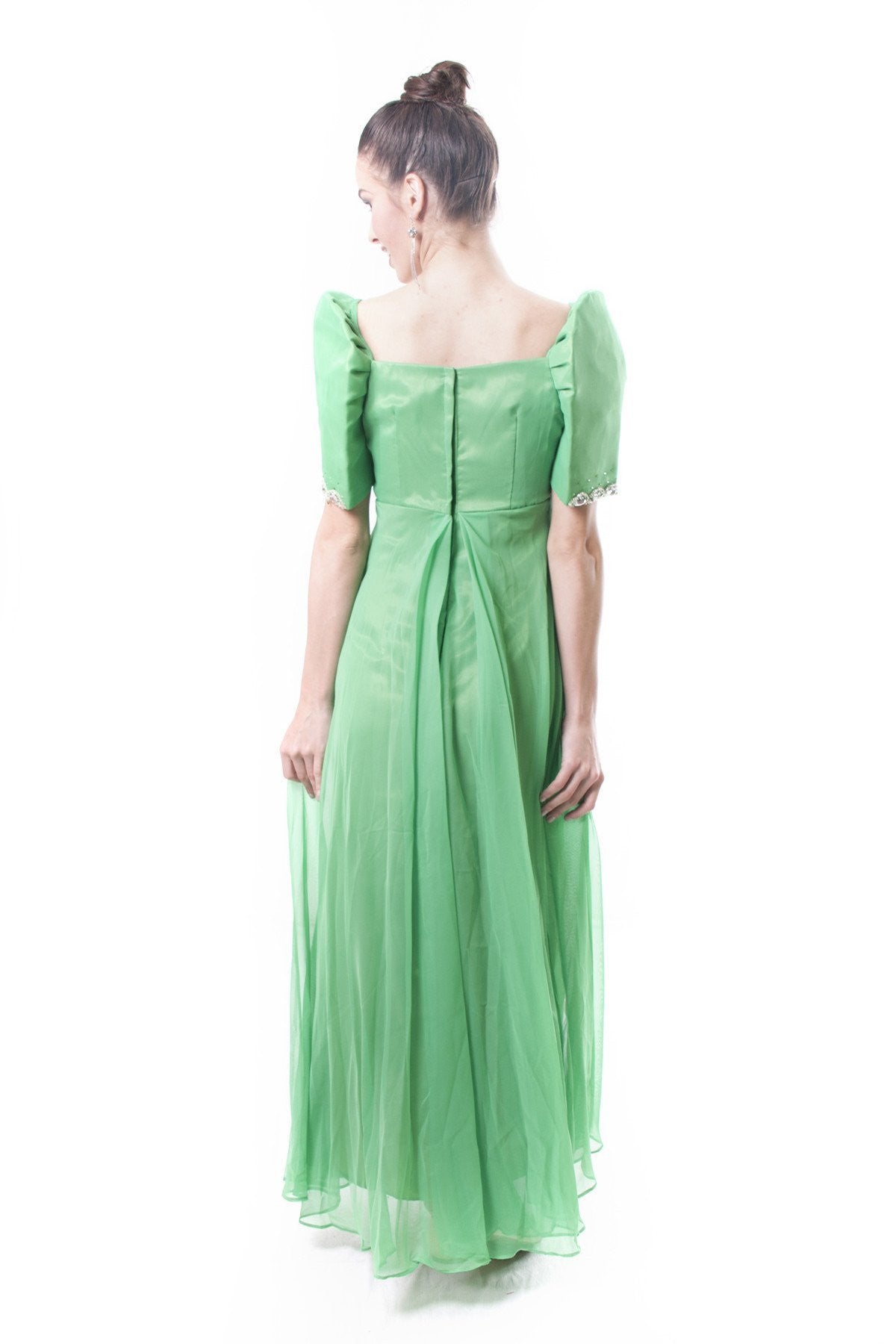What is a Filipiniana dress?
“Filipiniana” is an umbrella term for any piece of clothing or combination of clothing worn traditionally by Filipino women or Filipinas. Alampay, Baro't Saya, Butterfly Sleeves, Tapis, Terno, and Traje de Mestiza are common terms of Filipiniana clothing.
In this collection, you will see modern versions of the Maria Clara look, Traje de Mestiza, Baro't Saya and other historical designs for women.
Please note: Our Filipiniana are authentically made in the Philippines and Filipino sizes are usually one size smaller than most Western sizes. Please order one size up than your usual western size.
“Traje de Mestiza” directly translates into "Costume of the Fair-Skinned". This is another term for the Filipiniana dress and the more aristocratic Baro't Saya. It's often associated with the "Maria Clara" look that was made famous in Jose Rizal's novel Noli Me Tángere.
An “Alampay” is also known as the "pañuelo", this is a triangle-shaped shawl that has embroidered, lace-like, beaded, sequined, and/or cutworked details depending on the design. It is worn over the shoulder, usually over a kimona or other form-fitting garment.
"Baro't Saya" directly translates to "Shirt and Skirt". It's the basic outfit of the classic Filipiniana look. It comes with a top (usually a kimona with butterfly or bell sleeves) and a skirt, and is often accessorized with an alampay, and tapis. All the garments can be adorned with embroidered, painted, cutwork, and/or beaded details.
"Tapis" is a square piece of adorned fabric that is worn over the saya or skirt. Usually tied at one corner, it adds a layered appeal to the Filipiniana outfit and/or hides the occasional see-through material of the skirt underneath.
“Butterfly sleeves” are the distinct flared and standing sleeves of Filipiniana tops, sets, or gowns. They are perfectly rounded with stiff lining and an ornate shell often decorated with embroidery, beading, sequins, cutwork, lace, or other designs. The sleeve height is usually 3” or longer.
“Terno” means matching clothes in Spanish. A matching "baro't saya" has a top and skirt made of the same material, the same color, and/or has the same details. The Filipiniana Terno is the Filipiniana dress with the iconic butterfly sleeves. It evolved from the Baro't Saya and Traje de Mestiza to the modern one-piece terno we see today. It's become less about matching separate pieces, but more about the glamour of the complete look a designer terno embodies.
"Kimona" is the Filipiniana top that usually has bell sleeves. The modern silhouette is more tapered compared to its more billowy traditional counterpart. It is often embroidered, painted, and/or beaded. Its cut can be loose or tailored, and it can come with with butterfly sleeves (see above) or bell sleeves (as pictured). Some modern kimonas made out of Organza come with an undershirt (as pictured), while others have a Polyester lining.

